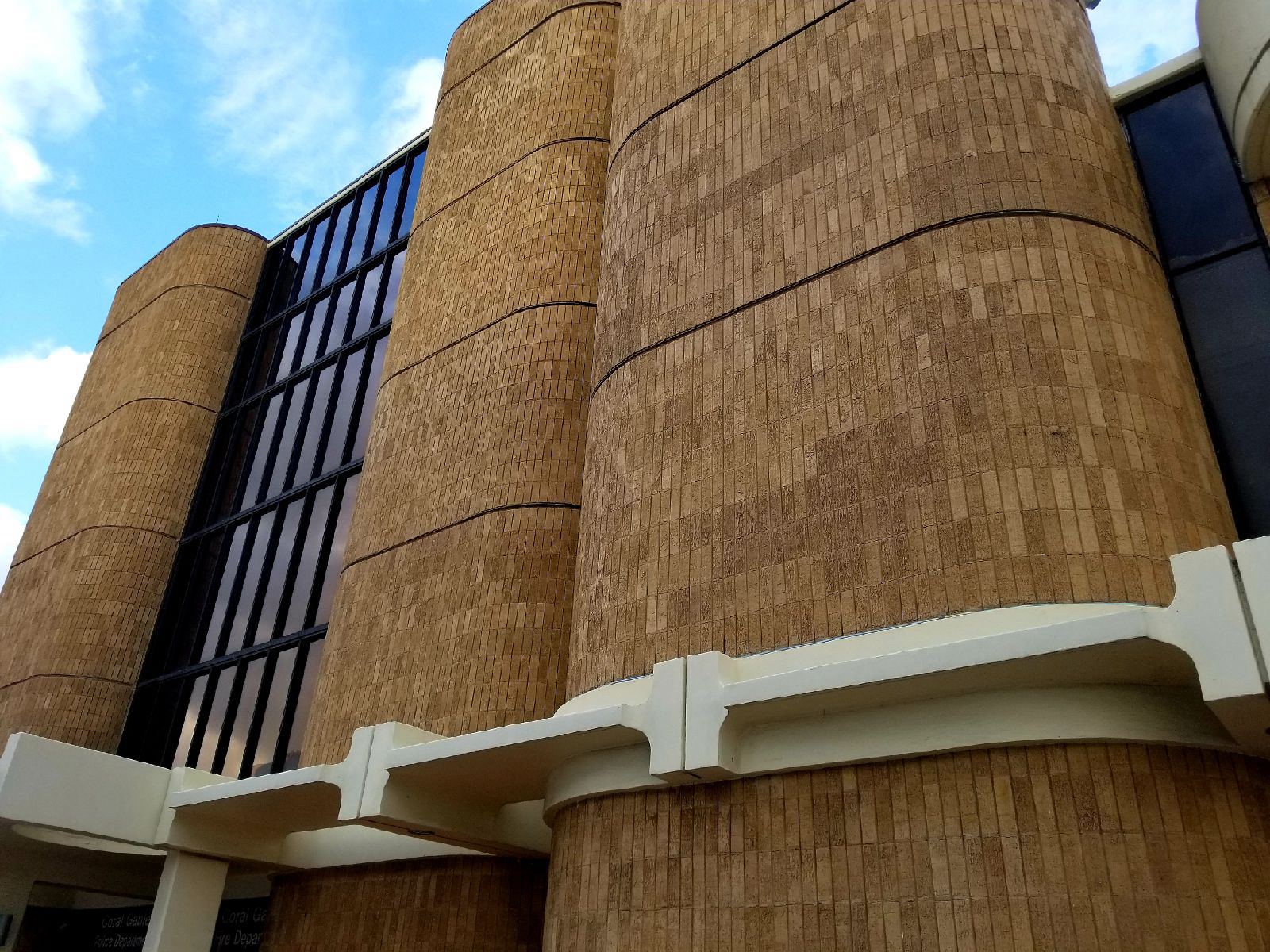The Coral Gables Public Safety Building is of new world Brutalist design and is rare in a city founded in the early 1920s and filled with old world architecture. The Coral Gables Public Safety Building is the only government building in the Brutalist style and is culturally and architecturally important to the local community. The beige brick building has solar glass windows and a four-story lobby framed with large glass panels. The complex includes a police station, a fire station, and a 400-space parking garage. The building was financed by a $5 million dollar bond issue passed by Coral Gables voters in 1971 and construction began in 1973.
The building was designed by the Coral Gables architectural firm of Klements and Associates and constructed by the general contractor Edward L. Nezelek, Inc. of Fort Lauderdale. The principal architect was Walter S. Klements who served on the board of directors of the Florida Association of the American Institute of Architects in the late 1960s. Klements was not the first architect chosen to build the iconic building. Klements “captured the job” when original architect Curt Haley died suddenly.
The building was inaugurated with much fanfare on July 19, 1975. The city commission originally considered naming the building after the long-time Police Chief William Kimbrough though ultimately rejecting the idea and upholding the city’s long-standing policy of not naming buildings after individuals. The site of the building covered 22 different lots and a tear down of one building which was home to the George Milenoff ballet studio.
The five-story structure (with one below-ground level) located in the center of the city of Coral Gables, consists of fire truck bays, administrative offices for both fire and police personnel, and a parking garage for city-owned and public vehicles. The 45-year-old building is notable for its use of sculpted concrete massed in monumental exterior curved walls–a geographical manifestation of Tropical Brutalism (design term coined by architectural historian Jean-Francois Lejeune). This aesthetic describes the homegrown Miami-style post-WWII period when architecture was unpretentious, strong, bold, rugged, raw and “honest”.
Although Tropical Brutalism is uncommon in South Florida, it is evident in various government and educational facilities throughout the area. The current Coral Gables government building is still in active use, despite the city’s plans to build a new Police and Fire Station. The plan includes the scheduled demolition of the current building by late 2019.
Coral Gables was founded during the City Beautiful movement in the 1920s and boasts Mediterranean Revival-style architecture throughout the city. The Brutalist Coral Gables Public Safety Building is rare among the Old Spanish-style buildings, mansions, and cottages and stands as an anomaly -- all the more reason for its protection. The building's loss would be of significant consequence for the city and historic preservation.
There is urgency in promoting the importance, understanding and preservation of this historic resource, whose status is in peril. Developers will take over the current site after swapping land with the City of Coral Gables. It is no secret that plans include demolishing the existing building immediately after the swap is complete.
The Coral Gables Public Safety Building is a significant and rare example of Tropical Brutalism and deserves attention, retention, protection, and preservation. For preservation is less about “beauty” and more about the totality of the historical significance within the context of place and time.
Brutalism’s time has come and Coral Gables has an opportunity to be at the forefront of that history.
We ask that the rare Brutalist-style building be saved and included as part of the future development plans for the site.
###
The Historic Preservation Association of Coral Gables is a 501c3 non-profit founded in 1991. The Association promotes the understanding of the importance of historic resources and their preservation. For more information, please visit www.historiccoralgables.org or write info@historiccoralgables.org to voice your opinion.
